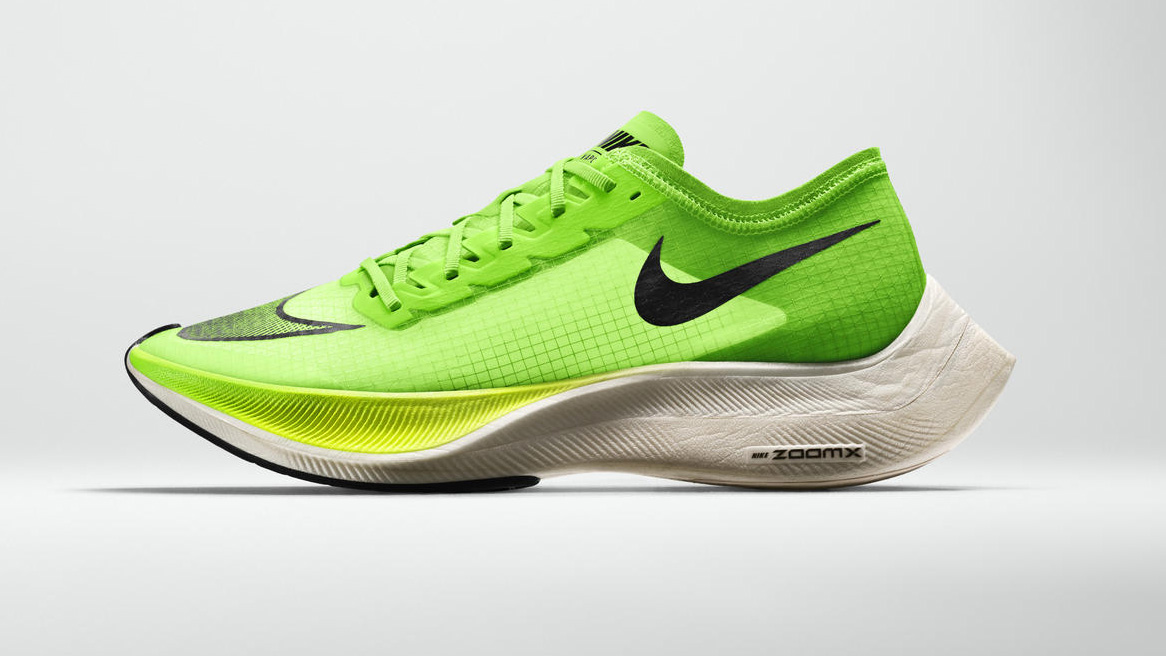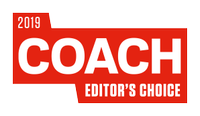You can trust Coach
Given the phenomenal success of the Zoom Vaporfly 4% shoes, which runners of all levels have been using to set personal bests and world records for the past two years, you may have expected Nike to merely tinker with the next version of the Nike Vaporfly line. An update to the upper while leaving the bottom of the shoe untouched probably would have sufficed, which is indeed what Nike has done with the latest versions of the Zoom Fly and Pegasus Turbo shoes. But while the NEXT% does have a new upper, that’s far from the extent of the changes to the shoe.
Nike has changed the heel-to-toe offset of the shoe from 11m to 8mm, which should make it better suited to forefoot runners and also more stable than the 4%, which could be a little skittish when rounding sharp corners.
There’s 15% more ZoomX foam packed into the midsole too, with most of it in the forefoot to aid a more explosive push-off. Despite this, the weight of the shoe hasn’t changed, at around 190g for a men’s size 9.
The outsole of the NEXT% has also been redesigned to provide more traction in the wet, and the new Vaporweave upper is more breathable and absorbs less water than the Flyknit on the 4%.
There’s 15% more ZoomX foam packed into the midsole too, with most of it in the forefoot to aid a more explosive push-off. Despite this, the weight of the shoe hasn’t changed, at around 190g for a men’s size 9.
The outsole of the NEXT% has also been redesigned to provide more traction in the wet, and the new Vaporweave upper is more breathable and absorbs less water than the Flyknit on the 4%.

A lot of changes then, and I noticed the extra stability straight away. In my first week with the shoe I tackled a 10K road race with six hairpin turns and a track session in the pouring rain, and the extra grip on the outsole compared with the 4% was appreciated. You can certainly feel a bit more confident attacking turns at speed in the NEXT% than in its predecessor.
That’s partly because there’s simply a bit more rubber on the outsole to provide grip, which will hopefully also mean the shoe is a little more durable than the 4%, which was only at its best for 200km or so. I’ve found you can keep using the 4% for training runs far longer than that, but it doesn’t have quite as much spring in the sole as it does when new.
I didn’t, however, really feel the benefit of the extra ZoomX foam in the sole. The NEXT% felt amazing to run in, but on a track session where I swapped between it and the 4% I’d say both shoes felt equally good. I’ve yet to use the NEXT% over a half or full marathon, but I’d be surprised if there was a huge leap in quality on the 4% over those distances, unless of course the race was in wet conditions.
See related
- The Best Nike Running Shoes For Every Type Of Runner
- The Best Marathon Running Shoes For Training And Racing
- The Best Running Shoes
The new upper is more comfortable than the previous Flyknit one and I was surprised at how much I preferred the offset laces, which I thought was little more than a gimmick when I first put on the shoes. You can get a snug fit without any pressure points along the top of your foot, and the toe box has a little more room than on the Flyknit 4% shoes. The NEXT% was true to size for me – you don’t need to size up in them.
Nike made a lot of changes with the NEXT%, and those changes have proved successful in making the shoe a little better in several key ways. However, if you have a pair of 4% I wouldn’t feel the need to rush out and upgrade them for your next race. And since a pair of the NEXT% will cost £240 compared with £210 for the 4%, I’d even be tempted to lean towards the latter when buying new. That said, if you race in the rain a lot, you’ll definitely benefit from the extra stability and grip of the NEXT%, so it may be wise for people living in the UK to stump up the extra £30.
Buy from Pro:Direct Running | £240

Nick Harris-Fry is a journalist who has been covering health and fitness since 2015. Nick is an avid runner, covering 70-110km a week, which gives him ample opportunity to test a wide range of running shoes and running gear. He is also the chief tester for fitness trackers and running watches, treadmills and exercise bikes, and workout headphones.


